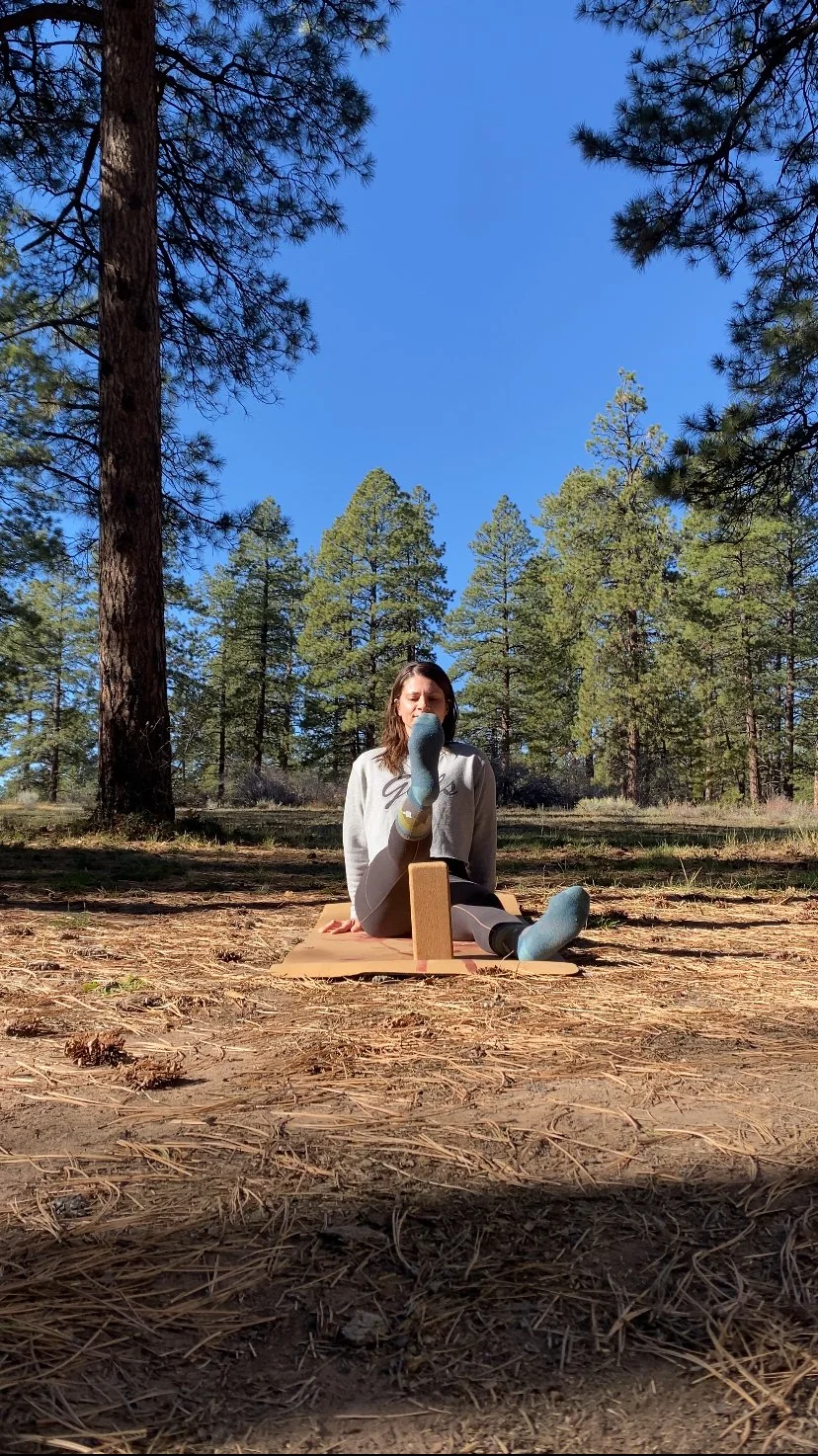Why Every Climber Needs Yoga in Their Training Plan Part Two: Balance and Mobility
In part one of “Why Every Climber Needs Yoga in Their Training Plan Part One,” I discussed what proprioception is. If you haven’t read it, you can find that here.
Balance and mobility are also reasons why yoga is a great addition to your climbing plan. Balance is about being still while standing or moving, no wobbling, no swaying. Balance in climbing sometimes looks like climbing a slab. Balance in climbing also looks like using small foot holds and staying upright on them, no slipping. Mobility is your ease of movement. Simply, mobility can be bending down and getting up without using assistance, picking up objects or reaching over your head. While mobility is different from flexibility, mobility in climbing sometimes looks like bringing your foot to a high hold without putting your hands on your feet or leg to get your foot there, using your full range of motion. If you struggle with balance or mobility, the good news is that both these skills can be learned. Better news is that adding yoga to your climbing training plan will help with this.
In my classes, incorporating balance and mobility is important to me because I know how valuable it is in climbing. If you are curious about what I do in my classes, you can check out my services and schedule. I’d love to teach you these skills
Yoga helps balance by strengthening your stabilizer muscles in your core and your legs. Think Eagle Pose, Tree Pose, Dancer Pose, etc. All these traditional yoga poses are balancing poses. If you practice yoga and struggle in these poses, focus on your drishti. Drishti is a Sanskrit term for gaze during a yoga pose. You want to focus on your drishti on something not moving in front of you, a pebble, speck of dust, or a spot on your yoga mat. Definitely not the teacher (who is moving) or the student in front of you. If you focus your drishti, you will find that you are able to balance much easier, thus creating strong stabilizer muscles. A strong core is important in climbing. Balancing poses also help build muscle in your feet and ankles. Practicing balancing poses will not only help with climbing by building muscle in your feet, ankles, and core but will help with the hiking you do to get to a crag or bouldering area.
Eagle Pose Variation
Mobility helps with injury prevention, increased range of motion, and reduces stiffness and pain. Mobility is different than flexibility. Mobility is active. One example of mobility is a pistol squat. There is hip and ankle mobility that goes into being able to do a pistol squat and even rising back up without using your hands. Another example of mobility is sitting down legs straight in front of you and placing a yoga block or a water bottle between your legs, then lifting your legs one at a time over the water bottle. If you use your hands to support you, you are a little less mobile if you do not need your hands to support you. If you do not use your hands, you have a higher range of motion. As mentioned earlier, getting a high foot and being able to use that high foot is mobility. Increased range of motion means less strain on your joints and muscles, helping with injury prevention. With improved mobility, you can even reach that hold you’ve been struggling to reach and get into optimal climbing positions to help you send that route you’ve had your eye on.
Mobility Exercise
As a climber and a yogi who has been practicing for a long time, I’ve had years to work on my mobility and balance. I am also really passionate about teaching mobility and balance to others to not only help with their climbing but improve their daily life. These are skills that will help you as aging inevitably happens, keeping your body healthy and happy. Do you still have questions after reading this? Reach out to me. I’d love to hear from you.
Check out balancing poses and mobility exercises on my Instagram. @samtheclimbingyogi

